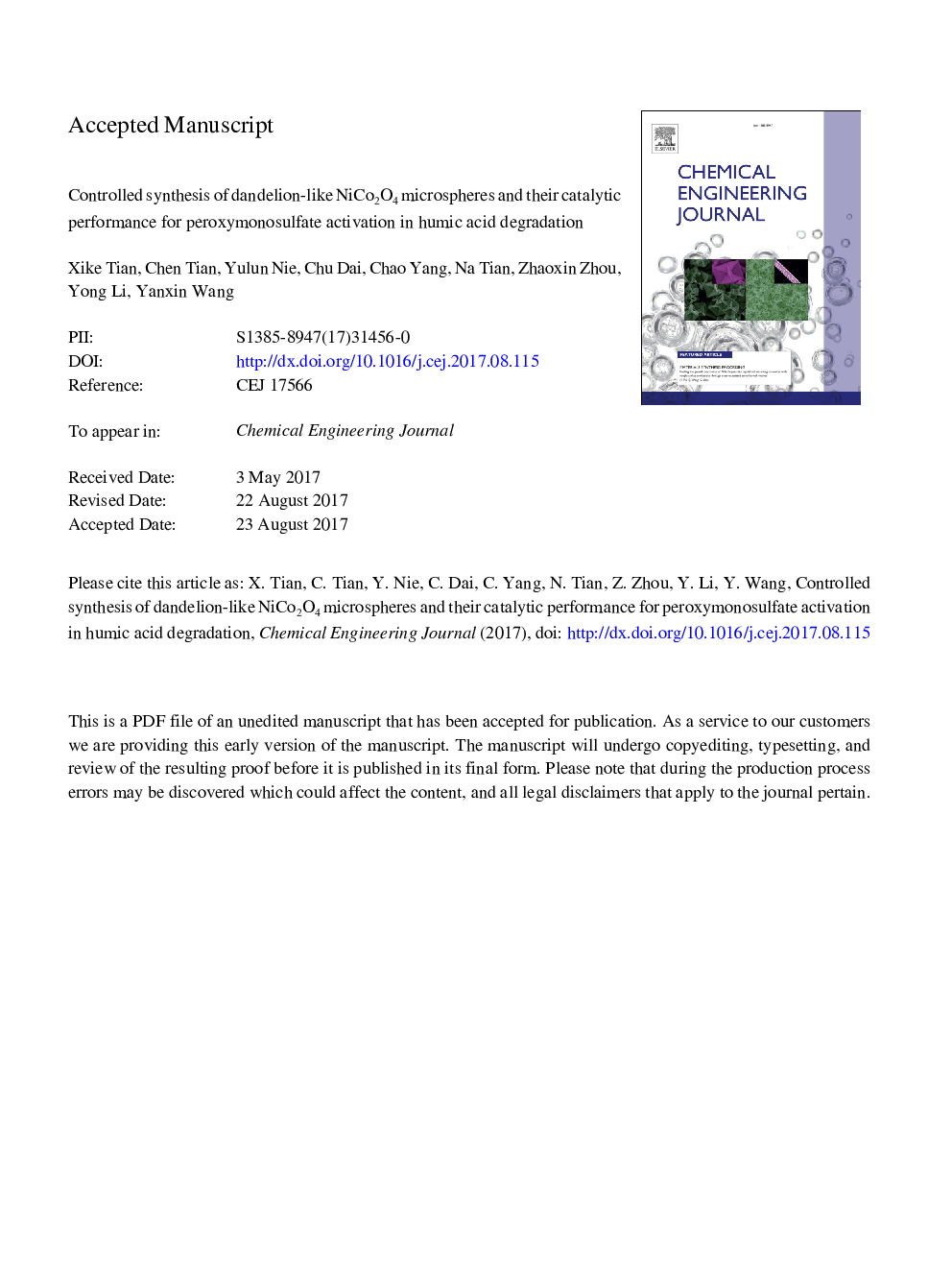| Article ID | Journal | Published Year | Pages | File Type |
|---|---|---|---|---|
| 4762779 | Chemical Engineering Journal | 2018 | 24 Pages |
Abstract
The structure and morphology have been proven to be the key parameters determining the catalyst's activity in peroxymonosulfate (PMS) activation. In this study, the dandelion-like NiCo2O4 microspheres with a mesoporous structure were successfully prepared by a simple hydrothermal method based on the characterization of XRD, BET, FT-IR and XPS analysis. The formation mechanism of dandelion-like microsphere was also proposed based on the results of SEM images at different hydrothermal reaction time. Their performance in PMS activation was evaluated by the humic acid (HA) degradation. It indicated that NiCo2O4 had an excellent catalytic oxidation activity and stability in removing of HA coupled with PMS and the analysis of UV-vis, Fluorescence EEMs and FTIR spectra showed that the original structure of HA was destroyed efficiently. The effect of Ni/Co ratios on catalytic activity for HA degradation was further investigated, in which NiCo2O4 was proven to be the most efficient toward HA degradation (90% at 120Â min vs. 50% for Co3O4 under the same conditions). Finally, the possible reaction mechanism was discussed, in which 1O2, SO4â and OH, especially 1O2 as the dominant active oxygen species were identified and involved the catalytic process. Hence, PMS oxidation over NiCo2O4 provides a promising alternative for HA degradation due to its efficient catalytic activity.
Related Topics
Physical Sciences and Engineering
Chemical Engineering
Chemical Engineering (General)
Authors
Xike Tian, Chen Tian, Yulun Nie, Chu Dai, Chao Yang, Na Tian, Zhaoxin Zhou, Yong Li, Yanxin Wang,
